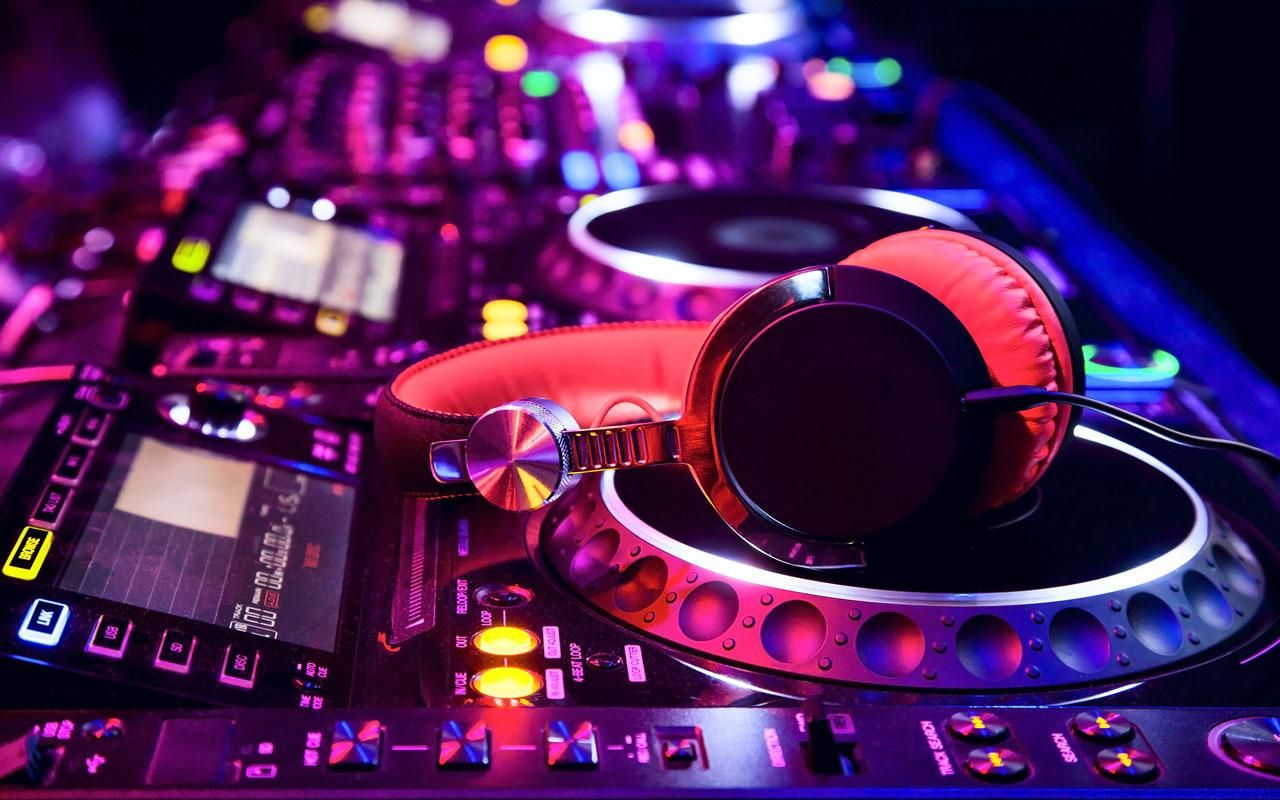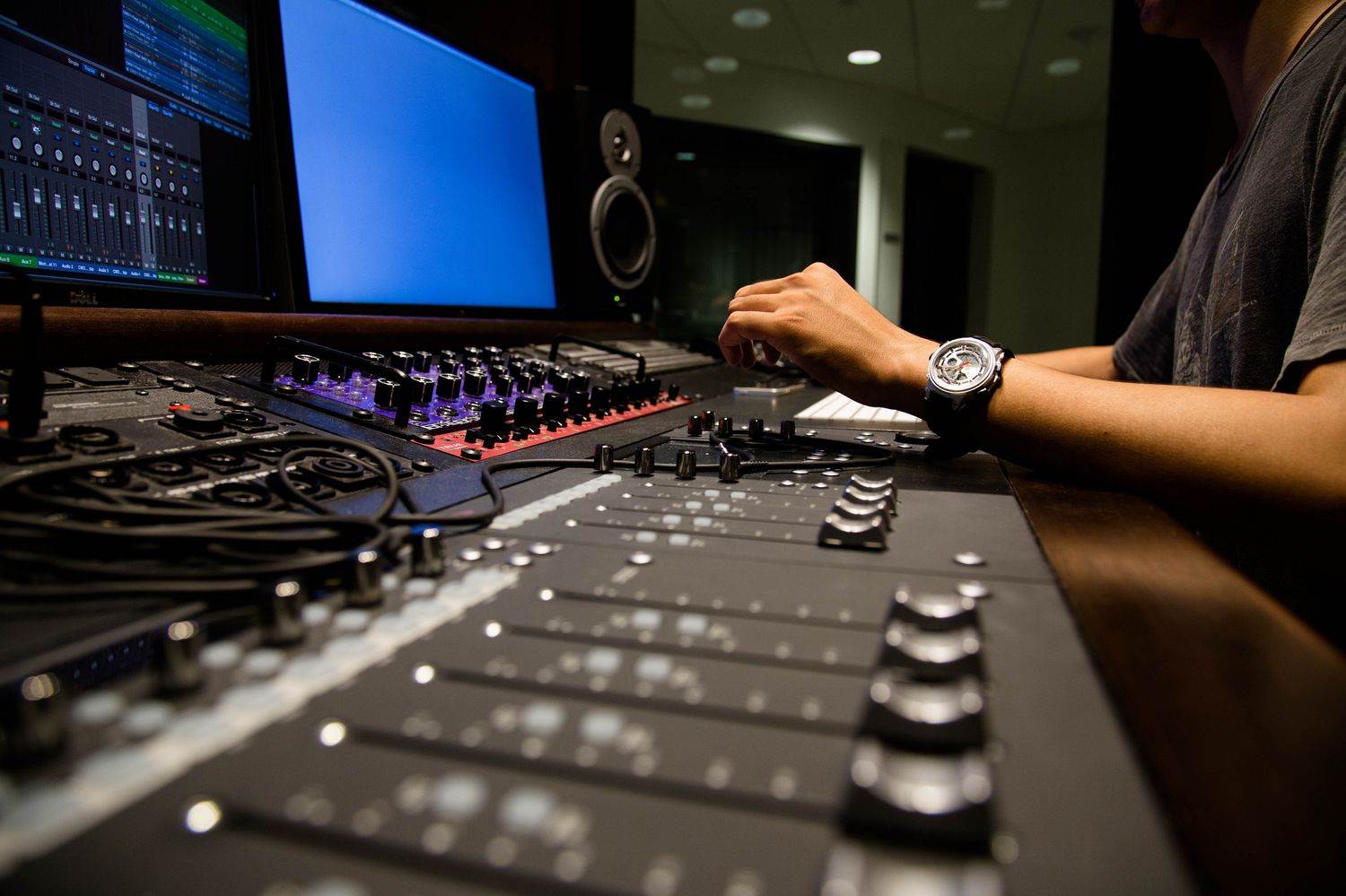Home>Production & Technology>Remix>What Is A Trap Remix


Remix
What Is A Trap Remix
Modified: January 22, 2024
Discover the exciting world of trap remixes and learn what makes them unique. Explore the best remixes, artists, and techniques in this popular music genre.
(Many of the links in this article redirect to a specific reviewed product. Your purchase of these products through affiliate links helps to generate commission for AudioLover.com, at no extra cost. Learn more)
Table of Contents
Introduction
Music has always been a dynamic and evolving art form, with new genres and subgenres constantly emerging. One such genre that has taken the music world by storm is trap music. Characterized by its booming 808 bass, sharp snares, and rapid hi-hats, trap music originated in the early 2000s in the southern United States. As the genre gained popularity, a new form of musical expression known as trap remixes began to emerge.
A trap remix takes an existing song from any genre and gives it a fresh twist by incorporating elements of trap music. This fusion creates a unique sound that simultaneously pays homage to the original song while infusing it with the hard-hitting energy and rhythmic patterns of trap music. The result is a mesmerizing blend that captivates listeners and keeps them coming back for more.
Trap remixes have become increasingly popular across various music platforms and have caught the attention of both music enthusiasts and artists alike. Artists are keen to experiment with this genre-bending style as a means of revitalizing their own music and reaching new audiences.
But what exactly makes a trap remix so fascinating? In this article, we will dive into the world of trap remixes, exploring its definition, origins, elements, popular examples, impact, controversies, and future.
Definition of a Trap Remix
A trap remix is a reinterpretation or reimagining of an existing song, where the original elements of the song are mixed with the signature sounds and characteristics of trap music. It involves taking the melodies, vocals, or instrumental parts of a song and applying the rhythmic patterns, drum patterns, bass lines, and production techniques commonly found in trap music.
Trap music itself originated in the early 2000s, primarily in the southern United States. It draws influence from Southern hip-hop, electronic music, and elements of dubstep. The genre was initially characterized by its heavy use of 808 sub-bass, aggressive lyrical content, and strong percussion.
With trap remixes, artists have the opportunity to give a fresh interpretation to popular songs from various genres such as pop, rock, hip-hop, or EDM. By infusing these songs with trap elements, they can transform the mood, energy, and overall vibe of the original track.
One of the key aspects of a trap remix is the incorporation of trap-style drum patterns. These typically include punchy kick drums, snappy snares, and rapid hi-hats or percussion elements. The use of these distinctive drum sounds helps to create a driving and energetic feel, adding intensity and groove to the remix.
Another hallmark of a trap remix is the use of deep 808 bass. The deep and resonating basslines, often layered with sub-bass frequencies, add weight and impact to the remix. They provide a mesmerizing foundation for the track and contribute to the powerful and captivating nature of trap music.
Furthermore, trap remixes often incorporate unique sound effects, vocal samples, and synth melodies to create an atmospheric and experimental sound. These additional elements help to distinguish the remix from the original and add a layer of creativity and personal expression to the track.
Overall, a trap remix is a creative reinterpretation of an existing song using the signature characteristics of trap music. It combines the familiar elements of the original with the hard-hitting drums, basslines, and production techniques of trap, resulting in a captivating and genre-blending musical experience.
Origins of Trap Remixes
The origins of trap remixes can be traced back to the rise of trap music itself in the early 2000s. Trap music originated in the southern United States, particularly in cities like Atlanta and Houston, where it gained popularity in the local hip-hop scene.
Inspired by the aggressive and hard-hitting sounds of Southern hip-hop, as well as electronic music genres like dubstep, producers and DJs began experimenting with blending these styles together. They started remixing popular hip-hop tracks, incorporating the elements of trap music to create a unique and exciting sonic experience.
As the popularity of trap music grew, so did the demand for trap remixes. DJs and producers began remixing songs from different genres to give them a trap twist. Pop songs, rock anthems, and even EDM tracks were being reimagined with trap elements, attracting a diverse range of listeners and expanding the reach of trap music.
The emergence of trap remixes on the internet and social media platforms played a significant role in their spread and popularity. SoundCloud, in particular, became a hub for both established and up-and-coming artists to share their trap remixes. The platform’s user-friendly interface and ease of sharing allowed remixes to reach a wider audience, leading to a surge in the popularity of trap remixes.
The success of trap remixes can also be attributed to their ability to appeal to both fans of the original song and fans of trap music. By combining familiar elements with trap’s infectious energy, remixes provided a fresh and exciting take on well-known tracks.
Furthermore, the rise of trap remixes can be attributed to the collaborative nature of the music industry. Artists from different genres started collaborating with trap producers to create remixes that merged their respective styles. These collaborative efforts served as a catalyst for the growth and diversification of trap remixes.
Overall, the origins of trap remixes can be traced back to the popularity of trap music and the desire to experiment and push the boundaries of musical genres. The internet and social media platforms played a crucial role in their dissemination, allowing artists and listeners to connect and share these remixes with a global audience.
Elements of a Trap Remix
A trap remix incorporates several key elements that contribute to its distinct sound and appeal. These elements are derived from the characteristics of the trap genre itself, and when blended with the original song, create a unique sonic experience. Here are the main elements of a trap remix:
- Trap-style Drum Patterns: One of the defining features of a trap remix is the use of trap-style drum patterns. These patterns typically include punchy kick drums, snappy snares, and rapid hi-hats. The combination of these elements creates a driving and energizing rhythmic foundation for the remix.
- Deep 808 Bass: The deep 808 bass is a signature element of trap music, and it plays a crucial role in a trap remix. The heavy and resonating basslines, often layered with sub-bass frequencies, add depth and impact to the track. They create a sense of energy and intensity that is characteristic of the trap sound.
- Synthetic Melodies: In a trap remix, synthetic melodies are often used to add texture and complexity to the track. These melodies can be created using various synthesizers and virtual instruments, allowing artists to experiment with different sounds and create unique sonic landscapes.
- Vocal Manipulation: Remixing vocals is a common practice in trap remixes. Artists manipulate the original vocals by adding effects like pitch shifting, time-stretching, and chopping. This gives the vocals a distinct and futuristic sound that complements the trap elements of the remix.
- Sound Effects: Trap remixes often incorporate various sound effects to enhance the overall experience. These can include risers, impacts, sweeps, and other atmospheric elements. Sound effects help create transitions between different sections of the remix and add depth and interest to the track.
- Expansive Dynamics: A trap remix typically exhibits a wide dynamic range, meaning it spans from quiet and atmospheric moments to loud and intense sections. This contrast in dynamics helps to create suspense and tension, keeping the listeners engaged throughout the track.
- Ambience and Atmosphere: Creating the right ambience and atmosphere is crucial in a trap remix. By incorporating atmospheric elements like pads, effects, and reverb, artists can create a sense of space and depth within the remix. This adds a layer of immersion and takes the listeners on a sonic journey.
These elements, when skillfully combined, create a unique and captivating trap remix. Artists and producers can experiment with these elements to add their own creative touch and bring new life to the original song.
Popular Trap Remixes
Over the years, countless trap remixes have captivated audiences and gained immense popularity. These remixes have taken various songs from different genres and transformed them into high-energy, hard-hitting tracks that have resonated with listeners worldwide. Here are some examples of popular trap remixes:
- Flume – “Numb & Getting Colder” (Baauer Remix): Baauer, known for his mega-hit “Harlem Shake,” put his unique touch on Flume’s original track. The remix takes the dreamy vocals of the original and infuses them with trap elements, delivering a blend of mellow melodies and heavy bass drops.
- Jay-Z & Kanye West – “Ns in Paris” (TrapZillas & Riot Ten Remix): This remix of the iconic hip-hop track flips the high-energy anthem into a trap banger. The remix adds crushing basslines, explosive drops, and intricate drum patterns, completely transforming the original song’s vibe.
- Post Malone – “Rockstar” (Crankdat Remix): Crankdat takes Post Malone’s chart-topping hit and gives it an electrifying trap remix. The remix maintains the catchy melody of the original while incorporating hard-hitting drums, aggressive synths, and a monstrous drop that amplifies the energy of the track.
- Gotye ft. Kimbra – “Somebody That I Used to Know” (KDrew Remix): KDrew’s remix of this Grammy-winning song breathes new life into the popular hit. The remix combines smooth vocals with trap-style drum patterns and synth melodies, creating a dynamic and captivating reimagining of the original.
- Skrillex – “Sicko Mode” (Skrillex Remix): Skrillex puts his signature touch on Travis Scott’s hit track, giving it a transformative remix. The remix amplifies the energy with heavy bass drops, glitchy effects, and Skrillex’s distinctive production style, pushing the boundaries of the original song.
These are just a few examples of the many trap remixes that have gained significant traction and garnered millions of listens on various streaming platforms. Each remix showcases the creativity and ingenuity of artists in reimagining popular songs with trap elements.
Trap remixes have become a mainstay in DJ sets, live performances, and music festivals, as they provide an exhilarating twist to well-known tracks. They have also garnered attention from established artists who recognize the value of incorporating trap remixes into their repertoire to appeal to a broader audience and stay relevant in the evolving music landscape.
As trap music continues to evolve and blend with other genres, there is no shortage of trap remixes that will continue to captivate listeners and push the boundaries of musical creativity.
Impact of Trap Remixes
The impact of trap remixes on the music industry has been profound, shaping the way we consume and appreciate music. These remixes have not only helped propel the trap genre into the mainstream but have also provided a platform for artists to showcase their creativity and reach new audiences. Here are some key impacts of trap remixes:
- Genre Blending and Cross-Pollination: Trap remixes have encouraged genre blending and cross-pollination within the music industry. By infusing trap elements into songs from different genres, remixers have introduced listeners to new and exciting sounds. This has increased the level of experimentation and innovation in music production, leading to the emergence of fresh and unique musical styles.
- Rejuvenation of Established Songs: Trap remixes have breathed new life into established songs. By adding trap elements, remixers have transformed classic tracks, making them relevant to younger generations and giving them a modern edge. This has allowed listeners to rediscover and appreciate these songs in a new and exciting way.
- Exposure for Lesser-Known Artists: Trap remixes have served as a launching pad for many up-and-coming artists. By remixing popular songs, these artists have been able to showcase their talent and gain exposure to a wider audience. This exposure has often led to new opportunities, collaborations, and increased recognition within the music industry.
- Expansion of Trap Music’s Reach: Trap remixes have played a crucial role in expanding the reach of trap music beyond its traditional fan base. By incorporating trap elements into popular songs, remixers have introduced the genre to listeners who may not have been familiar with it before. This has helped trap music gain broader acceptance and appreciation across diverse demographics.
- Engagement and Connection with Audiences: Trap remixes have a unique ability to engage and connect with audiences. The energy, bass-heavy drops, and infectious rhythms of trap music create an immersive and captivating listening experience. Remixes that incorporate these elements allow listeners to engage with familiar songs in a more dynamic and exciting way, forging a deeper connection between the artist and the audience.
The impact of trap remixes can be seen in the way they have influenced music production, expanded genre boundaries, and provided a platform for artistic expression. These remixes have helped shape the direction of contemporary music, showcasing the power of creativity and the ability to transform existing works into something entirely new and captivating.
As trap music and its remixes continue to evolve, it is clear that this genre will continue to leave a lasting impact on the music industry, pushing boundaries, and driving innovation for years to come.
Controversies Surrounding Trap Remixes
While trap remixes have gained immense popularity, they have not been without their fair share of controversies. The blending of different genres and the reinterpretation of beloved songs can sometimes stir up debates and disagreements within the music community. Here are some of the controversies surrounding trap remixes:
- Authenticity: One of the main controversies surrounding trap remixes is the question of authenticity. Traditionalists argue that remixing and adding trap elements to songs from other genres dilutes the original intent and artistic vision of the original artist. They believe that remixing should be done with more respect for the original work.
- Sampling and Copyright Issues: Another recurring issue with trap remixes is the use of unauthorized samples or copyrighted material. Some remixes have faced legal implications due to copyright infringement, as remixers may not have properly cleared the samples used in their remixes. This raises questions about the boundaries of creativity and the responsibility of remixers to obtain proper permissions.
- Quality and Credibility: Critics argue that not all trap remixes maintain the same level of quality and craftsmanship as the original songs or the remixes done by established artists. The sheer volume of remixes available online can sometimes lead to a saturation of subpar or unoriginal work, which can diminish the credibility of the genre and its artists.
- Respect for Original Artists: Some controversies arise from fans’ concerns about the lack of respect shown towards the original artists and their work. In some cases, fans may feel that remixes exploit the popularity of the original songs and capitalize on their success without properly acknowledging or crediting the original artists.
- Maintaining Musical Integrity: There are debates around whether trap remixes prioritize commercial appeal over artistic integrity. Critics argue that some remixers may focus solely on creating hit tracks that appeal to the masses, and in doing so, compromise the artistic integrity and depth that can be found in the original songs.
It is important to note that not all trap remixes face these controversies, and many remixers go through the appropriate channels to obtain permissions and aim to create quality work that respects the artistic vision of the original artists. The controversies highlight the need for transparency, respect, and collaboration within the music community to ensure that the remix culture continues to thrive while maintaining ethical standards and artistic integrity.
Ultimately, the controversies surrounding trap remixes reflect the ongoing dialogue between fans, artists, and the industry about artistic expression, creativity, and the balance between respecting the original work and pushing musical boundaries.
Future of Trap Remixes
The future of trap remixes is bright and promising, as this genre-bending form of musical expression continues to captivate listeners and evolve alongside the ever-changing landscape of music. Here are some key aspects that will shape the future of trap remixes:
- Innovation and Experimentation: As trap remixes have become more mainstream, artists are constantly pushing the boundaries and finding new ways to innovate within the genre. They are experimenting with different musical styles, incorporating unique soundscapes, and exploring unconventional techniques to create fresh and exciting remixes that defy expectations.
- Collaborations and Fusion: Collaborations between artists from different genres will continue to play a significant role in the future of trap remixes. This cross-genre collaboration allows for the blending of different musical styles, resulting in a fusion of sounds that push the boundaries of creativity and further expand the reach of trap remixes.
- Technology and Production Advancements: Advances in music production technology will enable artists to create even more intricate and unique trap remixes. With access to a wide array of powerful production tools and software, remixers will have the ability to experiment with complex sound design, intricate arrangements, and innovative effects, resulting in even more dynamic and captivating remixes.
- Diverse Representation: The future of trap remixes will see a greater emphasis on diverse representation within the genre. As trap music continues to reach global audiences, remixers from different backgrounds and cultures will contribute their unique perspectives, enriching the remix scene with a range of global influences and creating a more inclusive and diverse landscape.
- Integration with Visual and Multimedia: The future of trap remixes will likely involve a closer integration with visual and multimedia elements. Remixers will explore the use of music videos, visual effects, and interactive performances to enhance the listener’s experience. This integration will create a more immersive and engaging environment for fans to interact with trap remixes.
Overall, the future of trap remixes holds limitless possibilities. As the genre continues to evolve, artists will push boundaries, experiment with new techniques, and collaborate across genres to create unique and captivating remixes. The fusion of different musical styles, technological advancements, and the integration of visual elements will ensure that trap remixes remain a vibrant and dynamic form of musical expression.
It is through the creativity and innovation of artists and the ongoing support of music enthusiasts that the future of trap remixes will thrive and continue to shape the music industry for years to come.
Conclusion
Trap remixes have carved a unique space within the music industry, captivating listeners with their fusion of different genres and energetic sound. With their booming 808 bass, dynamic drum patterns, and innovative reinterpretation of popular songs, trap remixes have become a global phenomenon, pushing the boundaries of creativity and musical expression.
Throughout this article, we have explored the definition, origins, elements, popular examples, impact, controversies, and future of trap remixes. We have seen how these remixes have transcended traditional genre boundaries, allowing artists to experiment and forge new paths within the music landscape.
Trap remixes have had a profound impact on the music industry, expanding the reach of trap music while providing artists with a platform to showcase their talent and creativity. These remixes have rejuvenated established songs, exposing listeners to new sounds and breathing new life into familiar tracks.
While controversies surrounding authenticity, copyright, and quality persist, they reflect the ongoing dialogue in the music community about the ethics and artistic integrity of remix culture. The future of trap remixes looks promising, with continued innovation, collaboration, diverse representation, and integration of visual and multimedia elements.
As technology advances and creative boundaries are pushed, trap remixes will evolve and captivate audiences in new and exciting ways. They will continue to shape the music industry, inspire new generations of artists, and provide listeners with a dynamic and immersive musical experience.
Whether you’re a fan of trap music or not, there’s no denying the impact that trap remixes have had on the modern music landscape. So, keep your ears open and embrace the future of trap remixes as they continue to push the boundaries of creativity and define the sound of tomorrow.











